In recent weeks, Indonesia has been gripped by a profound social and political crisis, marking one of the most turbulent episodes in the nation’s recent history. What began as scattered demonstrations in response to government austerity measures has rapidly evolved into a mass movement encompassing a broad spectrum of Indonesian society—from students and ride-share drivers to informal workers and entire communities. The movement’s demands have grown in both scope and intensity, reflecting deeper structural tensions within the country’s political and economic systems.
Triggering Events and Public Anger
The initial spark was ignited by the government’s decision to implement sweeping budget cuts earlier this year. These austerity measures were accompanied by steep tax hikes in several provinces and a controversial decision by members of parliament to approve significant increases to their own allowances. This included a housing stipend of Rp50 million (approximately US$3,075) per month—an amount more than 12 times the average monthly salary in Indonesia. The stark contrast between the sacrifices expected of ordinary citizens and the privileges enjoyed by public officials fueled widespread public indignation.
The situation deteriorated further when a young ride-share driver, Affan Kurniawan, was killed after being struck by an armored police vehicle during a protest in Jakarta. His death, widely shared across social media, became a symbol of state brutality and a rallying point for broader discontent.
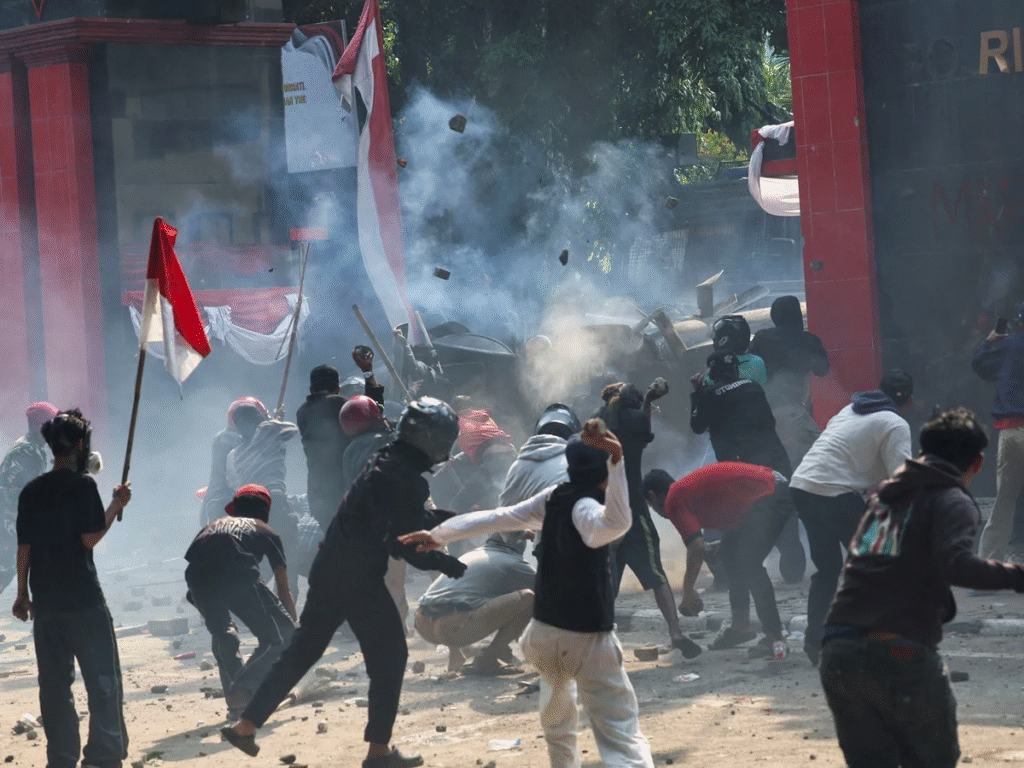
Within days, tens of thousands of delivery drivers and young workers mobilized in cities across the country, demanding justice and accountability.
An Expanding Movement
The scale and intensity of the protests soon escalated. Demonstrations spread from Jakarta to provincial capitals and smaller towns, including Pati, Makassar, Solo, Bandung, and Pekalongan. The participation of school and university students was especially significant. Largely unaffiliated with formal student organizations, these youths used social media to organize decentralized protests, often confronting police forces with remarkable courage and resilience.
The early demonstrations focused on the withdrawal of the parliamentary allowance increase. However, as the repression intensified and government officials responded with dismissiveness, the movement’s demands evolved. “Dissolve the Parliament” emerged as a unifying slogan, capturing widespread disillusionment with the political establishment. For many protesters, the demand signified not just frustration with specific policies, but with the legitimacy of the entire system.
As the demonstrations intensified, scenes of public defiance became more frequent. Police stations and government buildings were ransacked or burned in several regions. While these actions were denounced by authorities and some media outlets, many participants defended them as symbolic acts of reclaiming public resources from a corrupt elite.
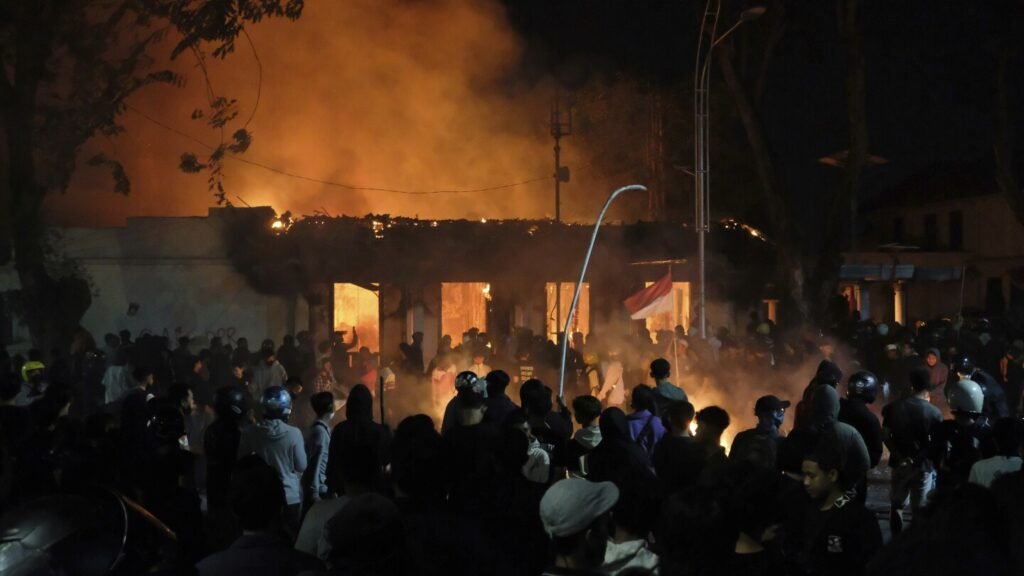
Government Response and Public Reaction
In an attempt to contain the unrest, the government made a series of tactical concessions. President Prabowo publicly visited the family of Affan Kurniawan, offering financial compensation and promises of accountability. However, these gestures were widely perceived as insincere. The officers responsible for the death were subjected to internal detainment rather than legal prosecution, further enraging the public.
High-profile politicians also came under direct attack. Mansions belonging to several members of parliament—including Ahmad Sahroni, Eko Patrio, and Finance Minister Sri Mulyani—were stormed or vandalized by protesters.
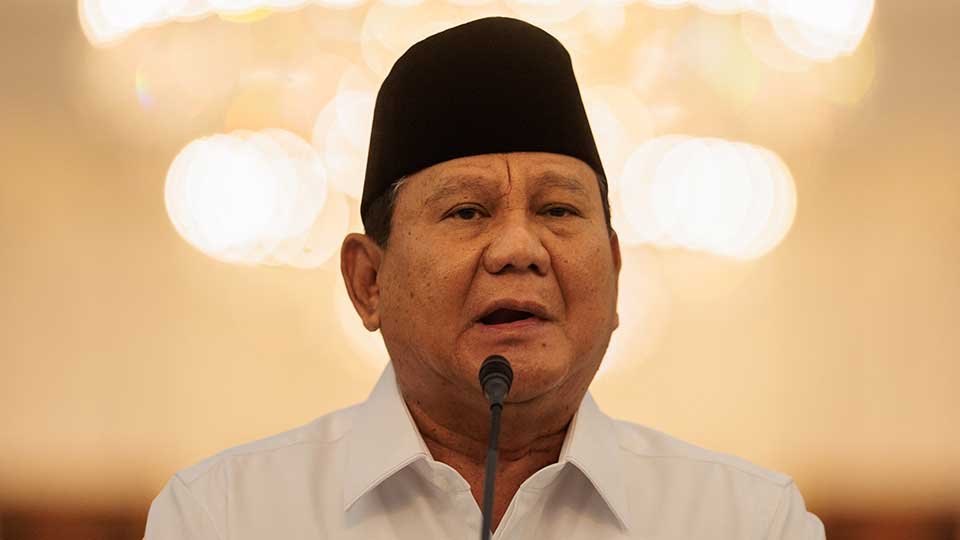
These incidents underscored the growing perception that wealth and privilege are unfairly concentrated in the hands of a political elite disconnected from the daily struggles of ordinary Indonesians.
Efforts by the government to portray the movement as lawless and violent have largely failed. In many instances, bystanders and local residents actively protected protesters from police violence, providing shelter or intervening to prevent arrests. These acts of solidarity have further legitimized the movement in the eyes of the broader public.
Toward a New Phase of Struggle
While the uprising has displayed remarkable spontaneity and energy, it remains at a crossroads. The central challenge now is whether it can develop a coherent structure and strategic direction capable of sustaining the momentum and achieving systemic change. So far, the formal trade union leadership has remained largely passive or even hostile to the demonstrations. Many have refrained from supporting the protests, citing concerns about “anarchist elements,” while advising their members to avoid involvement.
This disconnect highlights a critical gap in leadership. The working class—the backbone of Indonesian society—has yet to mobilize its full strength through coordinated industrial action. Despite the growing participation of delivery drivers and informal workers, a nationwide general strike has not yet been called. Without this crucial step, the movement risks stagnating or being co-opted.
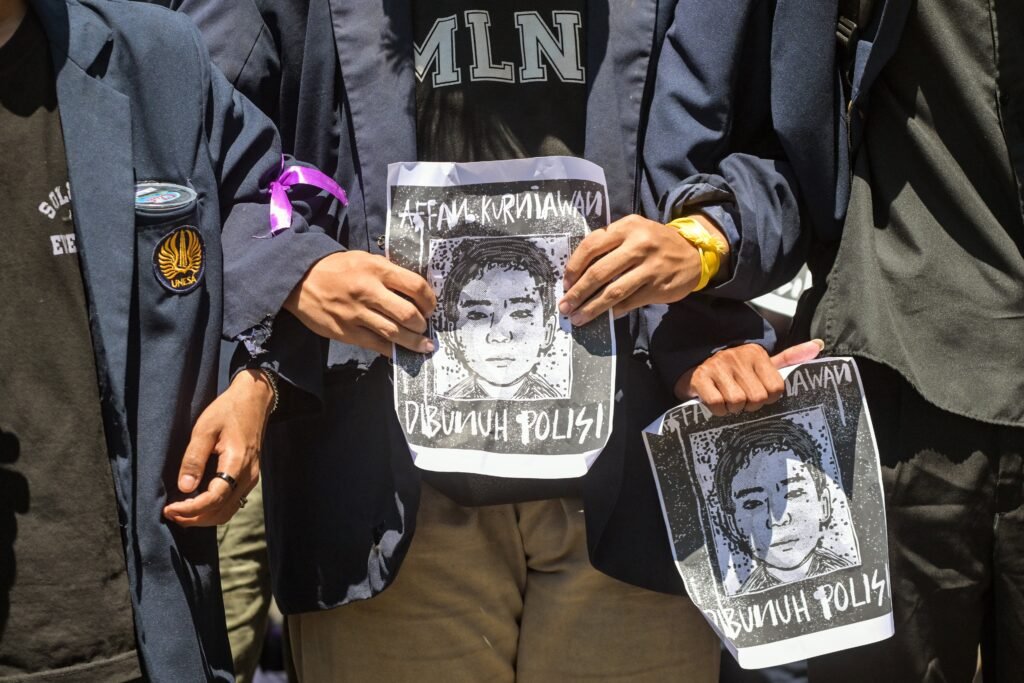
In the absence of support from established institutions, grassroots networks have become increasingly important. Students and young workers have begun organizing in neighborhoods, schools, and workplaces, laying the groundwork for more sustained forms of collective action. These informal structures may well form the foundation of new democratic forums capable of articulating the aspirations of the movement and holding the state accountable.
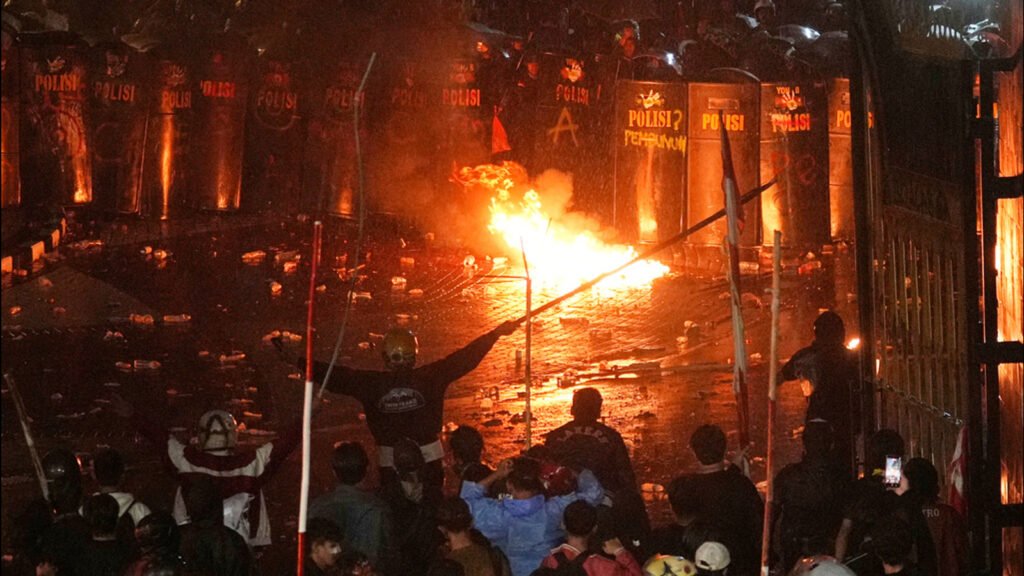
The Role of Political Clarity
At its heart, the Indonesian uprising is not simply a protest against individual politicians or specific policies. It is a response to a system that has consistently failed to deliver justice, equity, and dignity for the majority of the population. The call to dissolve parliament is emblematic of this broader disillusionment. It expresses a collective desire to break from the cycles of corruption, exclusion, and economic exploitation that have defined Indonesian politics for decades.
Nonetheless, the movement’s success will depend not only on its militancy but also on its ability to articulate clear political alternatives. Building a vision for a democratic and socially just future will require organizing beyond the streets—within the workplaces, communities, and institutions that shape everyday life.
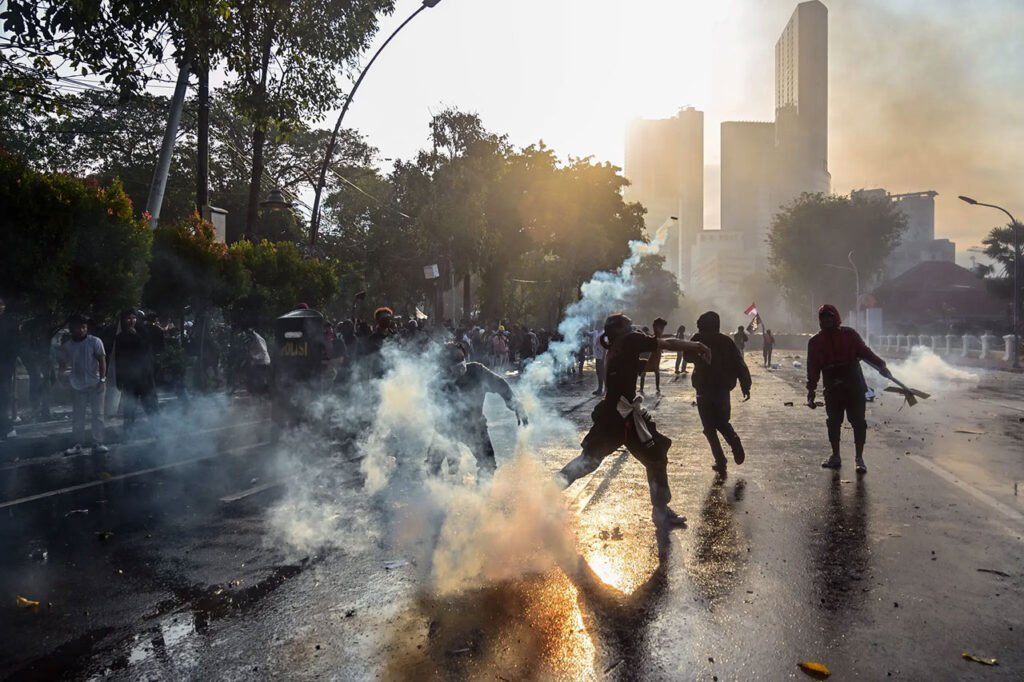
Indonesia stands at a pivotal moment. The uprising that began with a protest against economic injustice has blossomed into a nationwide challenge to the political status quo. While the state attempts to navigate the crisis through a combination of repression and concessions, the protesters are demonstrating a new form of agency and collective power. Whether this moment will culminate in lasting political transformation remains to be seen. But what is clear is that the Indonesian people have awakened, and they are no longer willing to accept a system that excludes and exploits them.

